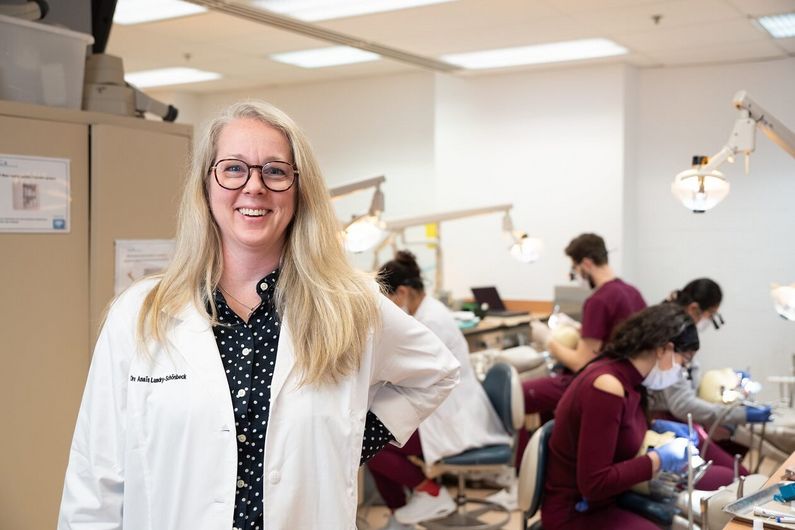Anais Landry-Schönbeck: putting the smile back on people's faces
- UdeMNouvelles
02/08/2023
- Virginie Soffer
Meet the Faculty of Dentistry's newest assistant professor.
As the daughter of a dentist, Anaïs Landry-Schönbeck has been immersed in dentistry all her life. After growing up around her mother’s practice, she decided to follow in her footsteps. She learned about prosthodontics—the repair or replacement of damaged or missing teeth—while at Université de Montréal, fell in love with the discipline and decided to specialize in it. Today she teaches the subject as a professor in the Department of Restorative Dentistry of UdeM's Faculty of Dentistry.
Putting the smile back on people’s faces
Patients often complain that they don’t like their smile or have trouble eating. Landry-Schönbeck loves coming up with solutions for them. She especially likes designing customized treatment plans for each patient. “I create a 'decision tree' and try to guide patients to the best options,” said the professor, whose strives for the best possible long-term outcomes.
“I don’t work with lifeless objects," she said. "I work with – and on – living beings. There’s nothing more satisfying than seeing people come back into my office with big smiles on their faces.”
The joy of teaching
Landry-Schönbeck was hired as a clinical lecturer while she was still completing her prosthodontic studies. It was then that she first discovered her passion for teaching. “I enjoyed pointing students in the right direction as they monitored patients during their in-clinic training sessions,” she said. “In addition to making sure they did things properly, I also showed them special tricks of the trade.” Since then, she has continued to teach as a clinical lecturer while also maintaining her own practice as a prosthodontist.
After spending three years as a lecturer giving a course on occlusion the way teeth meet when we close our mouths, Landry-Schönbeck is now a professor offering a course on fixed partial prostheses such as crowns. “It’s fundamental for second-year students, who up to that point have had barely any experience with dental equipment such as turbines, drills, etc. This is a hands-on course that gives them the chance to contour teeth on mannequins.” She’ll also give an introductory course on implantology for third-year students.
One change Landry-Schönbeck would like to see in student development is more self-assessment. “I don’t just hand out a grade. When I assess students, I identify which areas they need to work on. If students learn how to assess themselves, they can apply that later on in their own practice. There’s always some way we can improve treatments for patients and give them a better service.”













